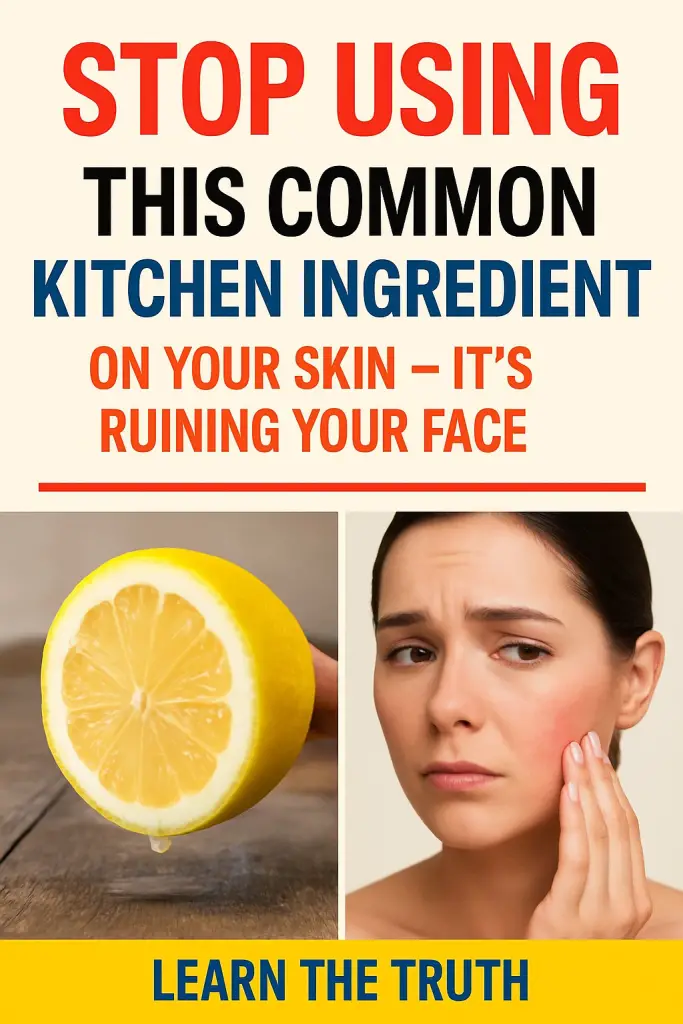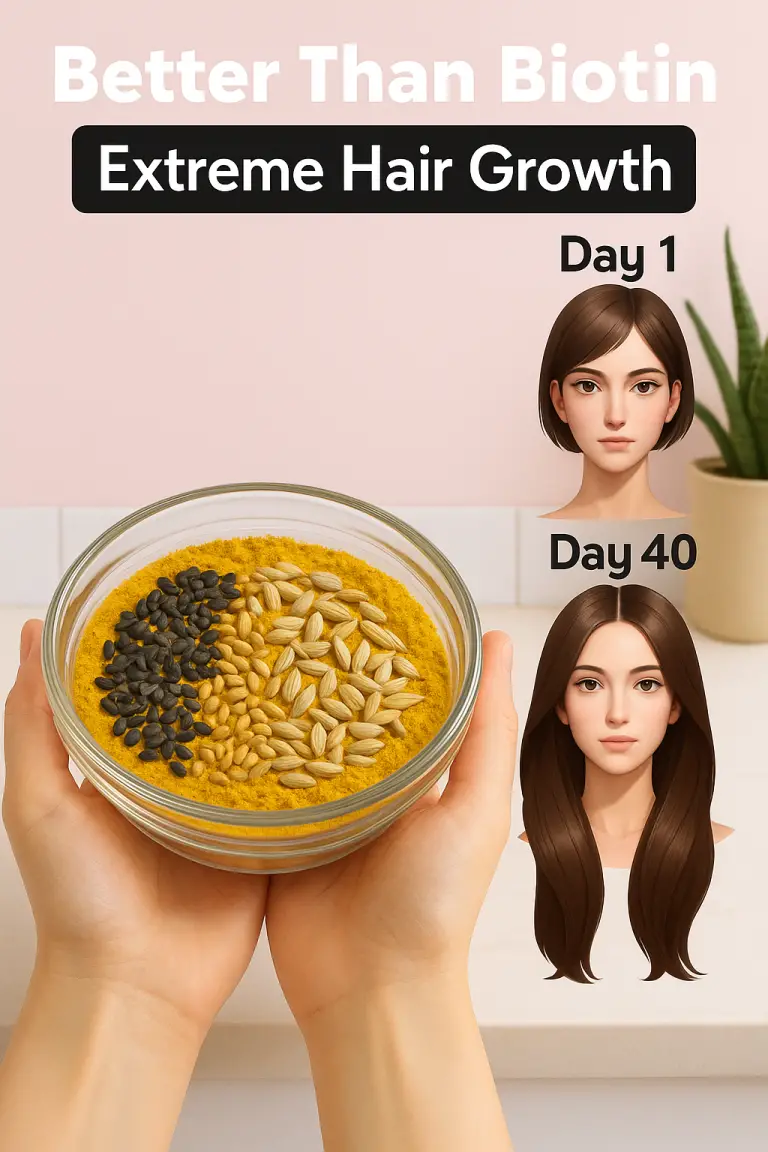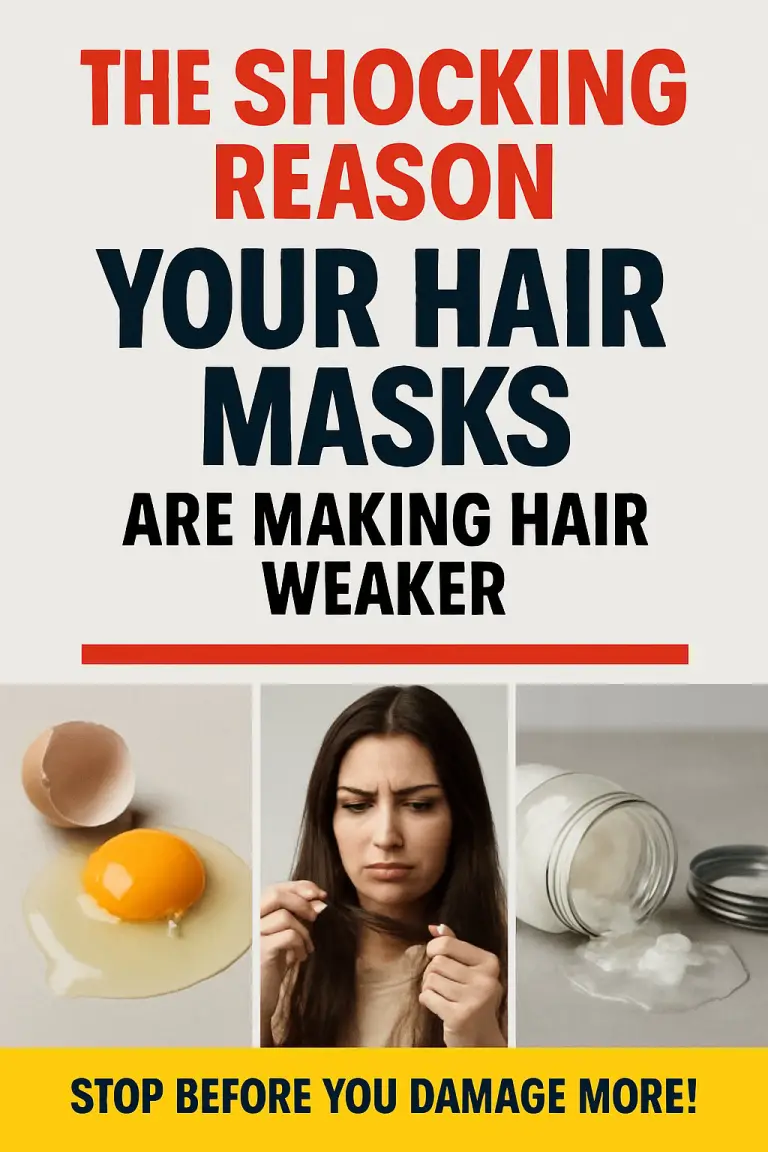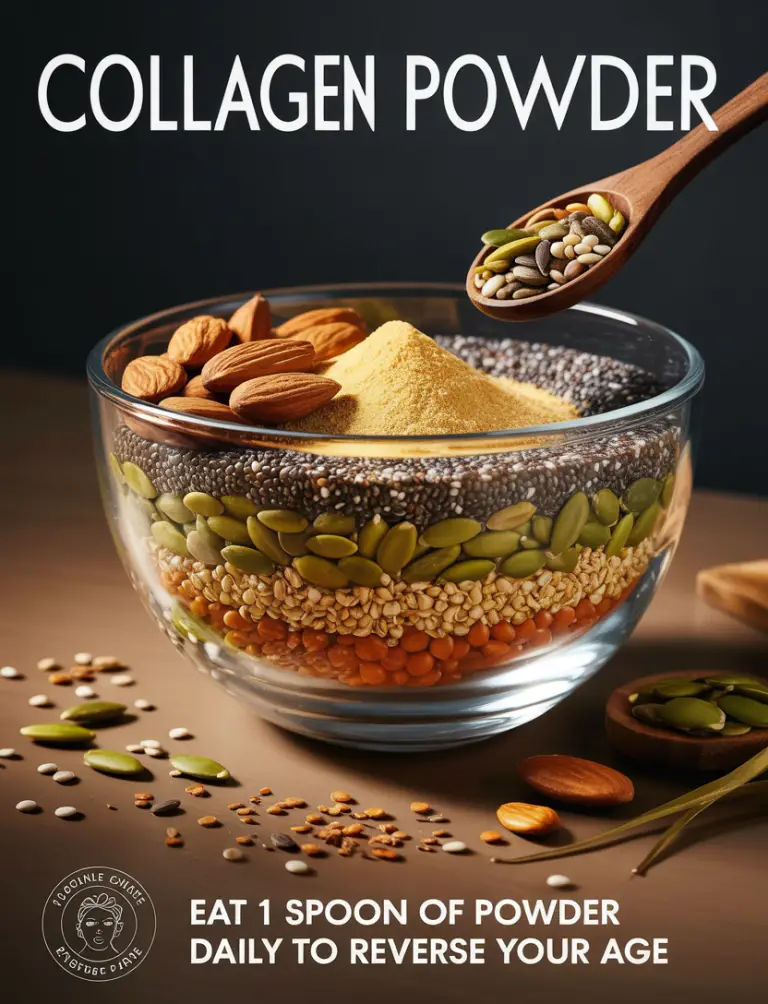Stop Using This Common Kitchen Ingredient on Your Skin – It’s Ruining Your Face

The Shocking Truth Lurking in Your Pantry
Okay, let’s be real for a second—most of us love a good DIY beauty hack. Who hasn’t scrolled through Pinterest or TikTok and thought, “Oh wow, I already have that in my kitchen. Let’s slap it on my face and see what happens!” I’ve definitely been guilty of it. It feels resourceful, natural, and let’s be honest—cheap.
But here’s the problem: some of these so-called miracle ingredients are not actually safe for your skin. In fact, one of the most popular kitchen “skincare heroes” is quietly wrecking your face barrier, leaving you with irritation, dryness, and long-term damage you probably don’t even see coming.
So, what’s the culprit? Drumroll, please… baking soda.
Yep, the same thing you use to make cookies fluffy, deodorize your fridge, or scrub the sink has been turned into a DIY face mask superstar—and it’s completely trashing your skin. Let’s break down exactly why.
Why Baking Soda Became a DIY Skincare Darling
The Allure of “Natural” Remedies
We live in an era where people want clean beauty. And I get it—less chemicals, more natural stuff. Baking soda seems harmless enough, right? It’s edible, it’s cheap, and hey, it makes your teeth sparkle when added to toothpaste. So naturally (pun intended), people thought, “Why not use it on skin too?”
The Claims That Hooked Us
You’ve probably heard these “benefits”:
- Removes blackheads.
- Exfoliates dead skin cells.
- Balances oil production.
- Clears acne.
- Brightens dull skin.
Sounds dreamy, right? Unfortunately, this is a classic case of “too good to be true.”
The Science: Why Baking Soda Doesn’t Belong on Your Face
pH Levels and Your Skin Barrier
Here’s the big problem—your skin’s natural pH is slightly acidic, usually around 4.5–5.5. This acidity (called the acid mantle) keeps your skin barrier strong and protects against bacteria, pollution, and irritation.
Now guess where baking soda sits on the pH scale? Around 9. That’s not just a little off. That’s like throwing a wild house party in a library—it completely disrupts the environment.
When you apply baking soda, you’re basically stripping away your skin’s protective shield, leaving it exposed, dry, and more prone to breakouts and sensitivity.
Short-Term “Glow” vs. Long-Term Damage
Yes, the first time you use baking soda, your skin might feel soft and smooth. That’s because you’ve just exfoliated the heck out of it and temporarily zapped oils. But here’s the kicker:
- Over time, your skin gets red, irritated, and inflamed.
- You may notice flakiness or dry patches.
- Acne? Yep, it can get worse, not better.
- Fine lines can look deeper since your barrier isn’t holding moisture anymore.
Real Talk: My Experience with Baking Soda
Years ago, I fell into the Pinterest rabbit hole and whipped up a baking soda + lemon juice mask (yes, I cringe now). At first, my skin felt baby-soft. But a week later? Total disaster. My cheeks were itchy, tight, and I was breaking out in places I rarely broke out before.
Turns out, I wasn’t exfoliating—I was literally burning my acid mantle away. And sadly, I’m not the only one. Dermatologists have endless horror stories from people trying this “hack.”
What Dermatologists Say
The Expert Take
Dermatologists almost unanimously warn against baking soda for skincare. Why? Because:
- It destroys your protective barrier.
- It leads to microtears (tiny invisible cuts) in your skin.
- It can trigger eczema or dermatitis flare-ups.
- It causes rebound oiliness—your skin goes into panic mode and produces more oil to make up for the dryness.
The Baking Soda Toothpaste Argument
“But it’s in toothpaste, so it must be safe!” True, but your teeth are not covered in delicate skin. Enamel is tough. Your face? Not so much.
Common Myths About Baking Soda in Skincare
Myth 1: “It Cures Acne”
Nope. While it might temporarily dry out a pimple, it also leaves your skin vulnerable to bacteria—making acne worse long-term.
Myth 2: “It Balances Oil”
Actually, it strips your skin, and your body responds by producing more oil. End result? Greasy T-zone plus flaky patches.
Myth 3: “It’s Natural, So It’s Safe”
So is poison ivy. Just because something is natural doesn’t mean it belongs on your skin.
Better Alternatives to Baking Soda
Okay, so what should you use instead? Let’s swap out the bad with the good.
For Exfoliation
- AHA/BHA serums (like glycolic or salicylic acid).
- Enzyme masks (papaya or pumpkin-based).
- Gentle scrubs with jojoba beads.
For Acne
- Salicylic acid cleansers.
- Benzoyl peroxide spot treatments.
- Niacinamide serums for calming inflammation.
For Brightening
- Vitamin C serums.
- Licorice root extract.
- Niacinamide (again—it’s a multitasker).
The best part? These are all formulated with skin in mind, meaning their pH levels actually support your barrier instead of bulldozing it.
Signs Baking Soda Has Already Damaged Your Skin
Wondering if you’ve already crossed into the danger zone? Here are some telltale signs:
- Persistent redness or irritation.
- Increased sensitivity to products that never bothered you before.
- Flaky or rough patches that don’t go away with moisturizer.
- More breakouts than usual.
- Tightness or burning sensation after washing your face.
If this sounds like you, don’t panic—it’s not permanent. Your skin can recover.
How to Repair Skin After Baking Soda Damage
Step 1: Stop Immediately
Ditch the DIY baking soda masks, scrubs, and pastes.
Step 2: Gentle Cleansing
Use a fragrance-free, sulfate-free cleanser to avoid further irritation.
Step 3: Rebuild Your Barrier
- Use a ceramide-rich moisturizer.
- Add hyaluronic acid for hydration.
- Keep things simple—don’t overload your skin with actives while it heals.
Step 4: Protect with SPF
Sun exposure on compromised skin = recipe for disaster. Always use a broad-spectrum sunscreen.
Why We Fall for “Kitchen Beauty Hacks”
Honestly? Because they’re everywhere, and they sound smart. Why buy a $40 serum when you can raid your pantry for free? Plus, influencers make these hacks look so easy and effective.
But here’s the truth: skincare chemistry isn’t the same as cooking. Just because something is edible doesn’t mean it’s skin-friendly. Our skin needs balance, and tossing in random kitchen ingredients often disrupts that balance instead of helping.
Quick Recap: Why You Should Ditch Baking Soda
- It wrecks your skin’s pH balance.
- It damages your protective barrier.
- It causes dryness, redness, and breakouts.
- The “glow” is short-term, the damage is long-term.
- Dermatologists universally say “hard pass.”
Conclusion: Your Face Deserves Better
At the end of the day, I get the appeal of DIY skincare—it feels fun, resourceful, and budget-friendly. But some hacks just aren’t worth it, and baking soda on your face is one of them. Your skin isn’t a science experiment, and it deserves better than harsh pantry powders pretending to be miracle cures.
So here’s my friendly nudge: toss the baking soda mask recipe in the trash and invest in products actually designed for your skin. Trust me, future-you (and your face) will thank you.






